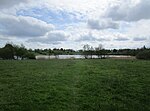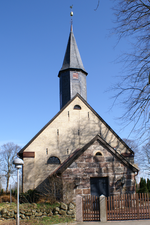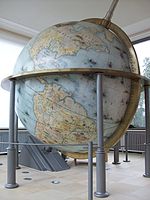Schleswig Cathedral
Buildings and structures in Schleswig-FlensburgBurial sites of the House of OldenburgGothic hall churches in GermanyLutheran cathedrals in GermanyLutheran churches converted from Roman Catholicism ... and 2 more
Lutheran churches in Schleswig-HolsteinSchleswig, Schleswig-Holstein

Schleswig Cathedral (German: Schleswiger Dom, Danish: Slesvig Domkirke) officially the Cathedral of St. Peter at Schleswig (German: St. Petri-Dom zu Schleswig), is the main church of the city of Schleswig and was the cathedral of the Bishop of Schleswig until the diocese was dissolved in 1624. It is now a church of the North Elbian Evangelical Lutheran Church, the seat of the Lutheran Bishop of Schleswig and Holstein, and ranks among the most important architectural monuments of Schleswig-Holstein.
Excerpt from the Wikipedia article Schleswig Cathedral (License: CC BY-SA 3.0, Authors, Images).Schleswig Cathedral
Norderdomstraße,
Geographical coordinates (GPS) Address External links Nearby Places Show on map
Geographical coordinates (GPS)
| Latitude | Longitude |
|---|---|
| N 54.513333333333 ° | E 9.5691666666667 ° |
Address
Sankt-Petri-Dom zu Schleswig
Norderdomstraße 4
24837 , Altstadt
Schleswig-Holstein, Germany
Open on Google Maps










